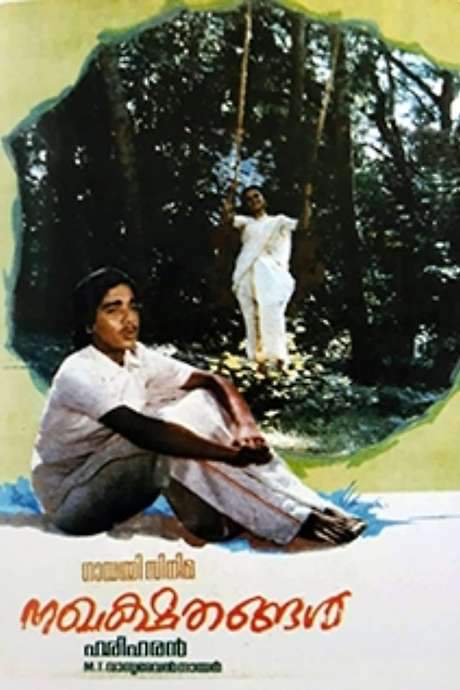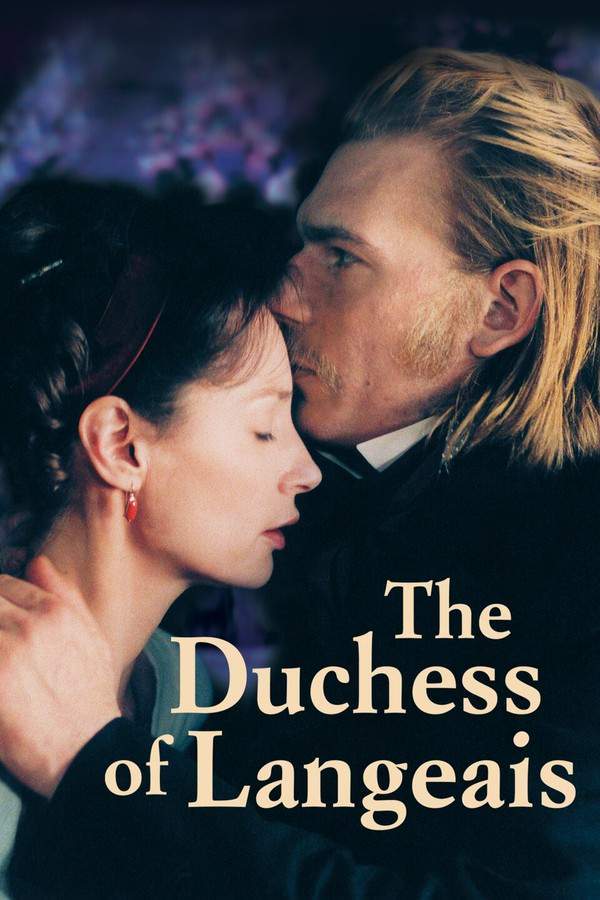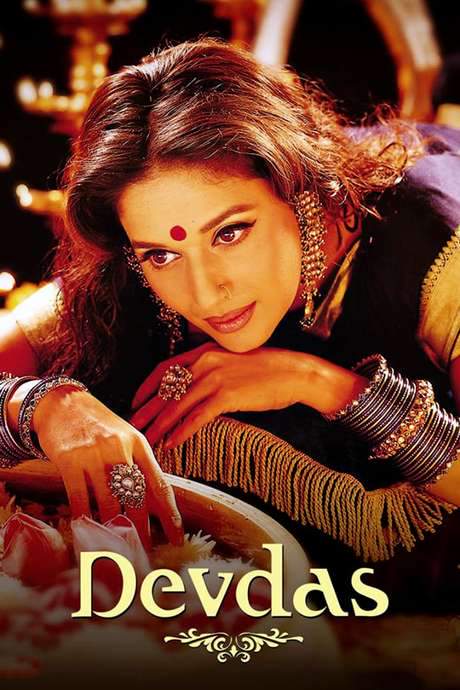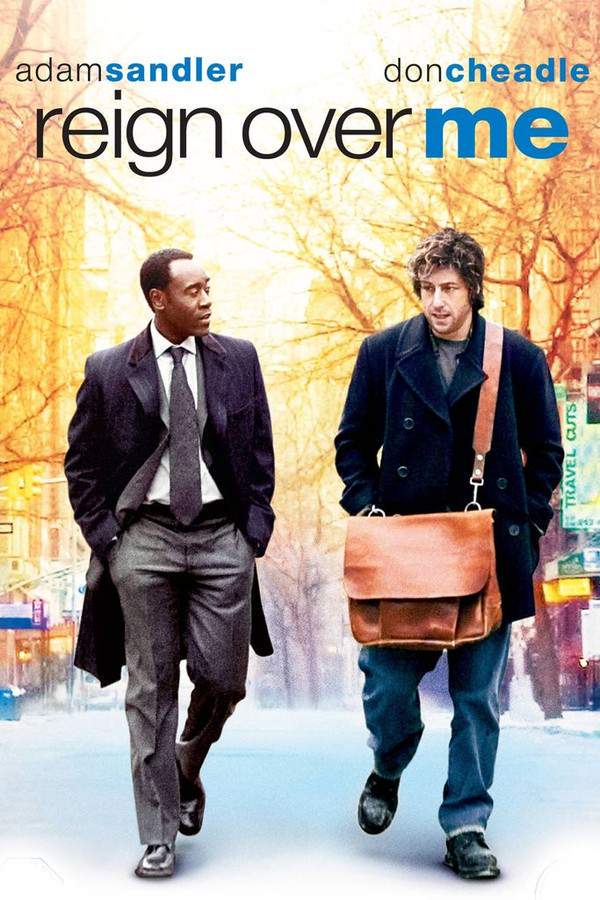
Nakhakshathangal
Year: 1986
Runtime: 140 mins
Language: Malayalam
Director: T Hariharan
Ramu, a 16‑year‑old living under a harsh uncle, travels to Guruvayoor and meets 15‑year‑old Gouri. They fall in love, part, and later reunite in the city after Ramu runs away and stays with neighbor Namboothiri. A lawyer employs him; Gouri works as the maid in the lawyer’s house. The lawyer’s deaf‑mute daughter Lakshmi falls for Ramu, and the lawyer arranges their marriage without Ramu’s consent, leading to a tragic love triangle.
Warning: spoilers below!
Haven’t seen Nakhakshathangal yet? This summary contains major spoilers. Bookmark the page, watch the movie, and come back for the full breakdown. If you're ready, scroll on and relive the story!
Nakhakshathangal (1986) – Full Plot Summary & Ending Explained
Read the complete plot breakdown of Nakhakshathangal (1986), including all key story events, major twists, and the ending explained in detail. Discover what really happened—and what it all means.
Ramu, Vineeth Radhakrishnan, a 16-year-old boy, lives under the weight of his irritable uncle who often treats him like a slave. On a trip to the pilgrimage town of Guruvayoor with his uncle, Ramu meets Gowri, Monisha Unni, who has come with her grandmother. The two feel an instant, tender connection, sharing quiet talks and small moments before they part ways, unaware of what fate has in store for them.
Back home, Ramu runs away from his uncle and lands in the city with his neighbor P. Jayachandran. By sheer chance, Ramu and Gowri are brought back into each other’s lives. fate appears to be steering them toward a different path when a lawyer invites Ramu to stay in his house, where Gowri works as a maid. In the lawyer’s household, the lawyer’s deaf and dumb daughter, Lakshmi, Saleema, is drawn to Ramu, and the adults decide to arrange a marriage without fully consulting him.
Gowri becomes Lakshmi’s maid and tries to nudge Ramu toward Gowri, even as Ramu finds himself growing fond of Lakshmi. He remains in love with Gowri, but a close friendship blooms between him and Lakshmi, who begins to see a future she hadn’t expected. Lakshmi’s happiness seems fragile but genuine, and Gowri stands by her, supporting the notion that Ramu should choose his own heart.
Trouble resurfaces when Lakshmi’s grandmother falls ill and asks the lawyer to promise not to lead Ramu astray from Lakshmi. A tension grows as Lakshmi becomes more confident about her place, and Gowri worries about losing Ramu to the life she wants with him. The situation intensifies when Lakshmi, feeling slighted, lashes out at Gowri, and Gowri bursts into tears, running away. Ramu, moved by Gowri’s distress and the sight of their separation, becomes deeply unsettled.
Lakshmi, seeing the two embrace in sorrow, grows increasingly furious that Ramu’s heart seems to belong to Gowri. She lashes out even more, smashing belongings in her room, and a note appears on the desk declaring, “Lakshmi is a fool.” Eventually, Ramu tells the lawyer that he does not want this arranged marriage to Lakshmi. The lawyer mourns his daughter’s unspoken hurt, but he also warns that Lakshmi truly loves Ramu, while Ramu’s heart remains with Gowri. depressed, Ramu’s shift unsettles everyone, and Lakshmi begins to recognize the consequences of her actions.
Despite the tension, Lakshmi and Gowri reach a fragile understanding. Lakshmi, seeking forgiveness, approaches Gowri with humility, and Gowri accepts her apology. Yet the deeper currents of love and obligation pull in different directions, leaving them to navigate sorrow and forgiveness under the weight of their choices.
In a quiet, almost ceremonial moment near a waterhole, Lakshmi finds Gowri washing clothes, and the two exchange a hesitant look that softens into reconciliation. Gowri forgives Lakshmi after an earnest apology, and the two share a compassionate embrace. Yet the story’s darkest turn arrives when the world learns of Ramu’s fate: a suicide note reveals that he has died after being struck by a train. Lakshmi is stunned and mournful as she hands the note to Gowri. The two women stand outside Lakshmi’s house, united in grief and supporting one another as they endure the loss of the young boy who connected their lives in such complicated ways.
Last Updated: October 09, 2025 at 14:27
Explore Movie Threads
Discover curated groups of movies connected by mood, themes, and story style. Browse collections built around emotion, atmosphere, and narrative focus to easily find films that match what you feel like watching right now.
Movies about forbidden love and tragic fate like Nakhakshathangal
Stories where deep love is thwarted by inescapable societal obligations.If you were moved by the tragic romance in Nakhakshathangal, this collection features movies where young love is tested by fate and social obligation. These stories share a melancholic tone and heavy emotional weight, often culminating in a sad or bleak conclusion, perfect for fans of sorrowful and romantic dramas.
Narrative Summary
The narrative pattern follows a passionate, often youthful, romance that is challenged by external forces beyond the lovers' control, such as family dictates, class differences, or arranged marriages. The journey is linear, focusing on the emotional turmoil of the protagonists as they move from hope towards an inevitable, tragic outcome.
Why These Movies?
These films are grouped together because they center on the powerful, shared theme of love versus destiny. They create a coherent experience through their melancholic tone, heavy emotional weight, and a focus on the fragility of happiness in the face of oppressive social structures.
Movies with a quiet, melancholic mood like Nakhakshathangal
Emotional stories that unfold slowly, cultivating a deep sense of tender sorrow.For viewers who appreciated the slow, tender, and sorrowful mood of Nakhakshathangal, this section highlights similar dramas. These films share a gentle pacing, a focus on internal turmoil, and a melancholic tone that builds towards a heavy emotional payoff, ideal for those seeking reflective and poignant stories.
Narrative Summary
Stories in this thread unfold at a deliberate pace, often linear and straightforward, allowing space for quiet moments of connection and despair. The primary conflict is internal and emotional, focusing on characters grappling with loss, love, and grief in a way that feels intimate and real.
Why These Movies?
The connection is based on a specific mix of slow pacing, a melancholic and tender tone, and a heavy emotional weight. This combination creates a unique viewing experience centered on quiet reflection and deep, sustained sorrow, making the films feel cohesive in their vibe and emotional impact.
Unlock the Full Story of Nakhakshathangal
Don't stop at just watching — explore Nakhakshathangal in full detail. From the complete plot summary and scene-by-scene timeline to character breakdowns, thematic analysis, and a deep dive into the ending — every page helps you truly understand what Nakhakshathangal is all about. Plus, discover what's next after the movie.
Nakhakshathangal Timeline
Track the full timeline of Nakhakshathangal with every major event arranged chronologically. Perfect for decoding non-linear storytelling, flashbacks, or parallel narratives with a clear scene-by-scene breakdown.

Characters, Settings & Themes in Nakhakshathangal
Discover the characters, locations, and core themes that shape Nakhakshathangal. Get insights into symbolic elements, setting significance, and deeper narrative meaning — ideal for thematic analysis and movie breakdowns.

More About Nakhakshathangal
Visit What's After the Movie to explore more about Nakhakshathangal: box office results, cast and crew info, production details, post-credit scenes, and external links — all in one place for movie fans and researchers.






























